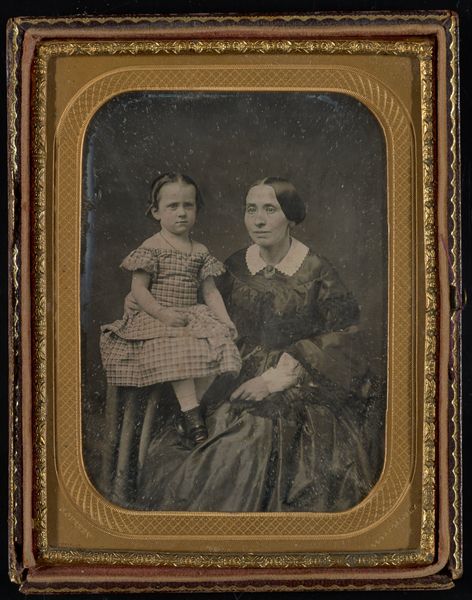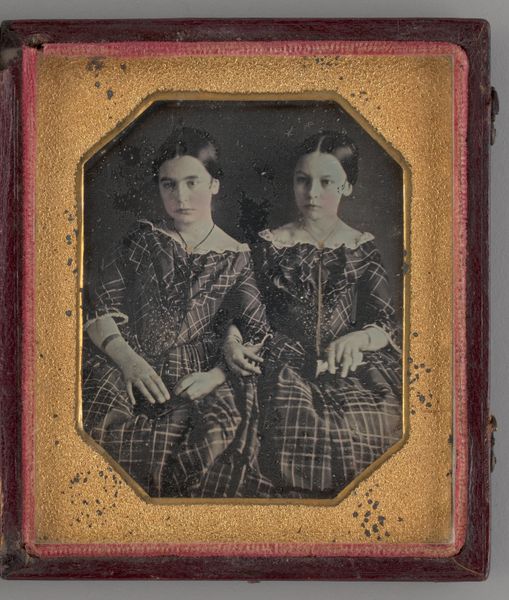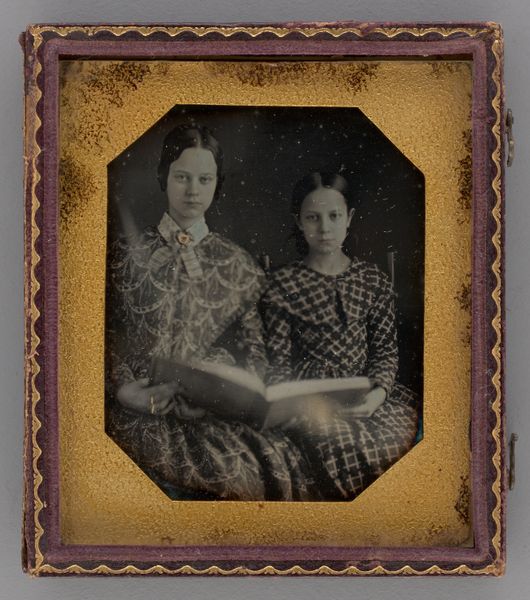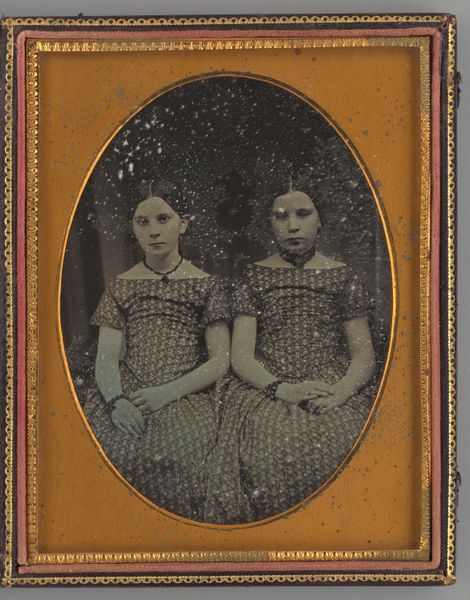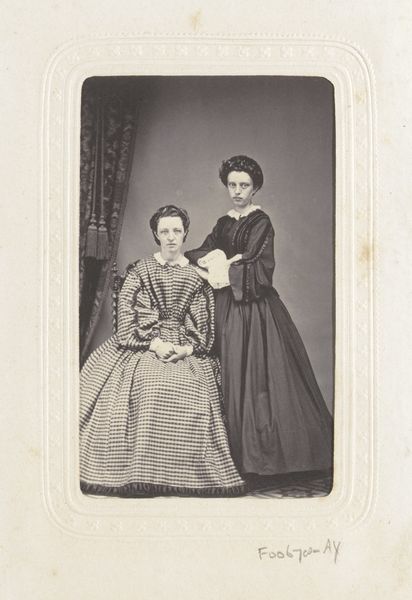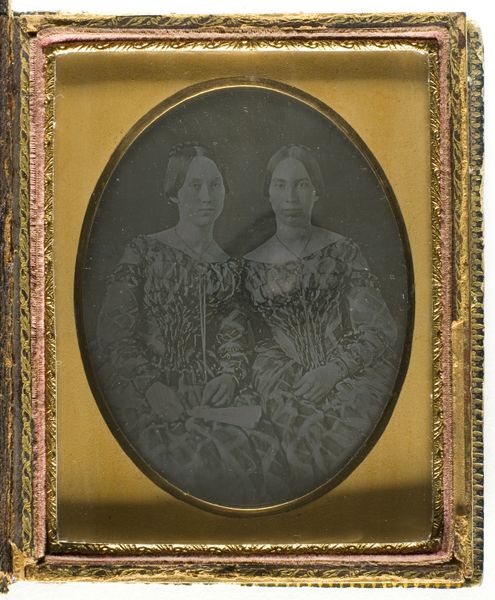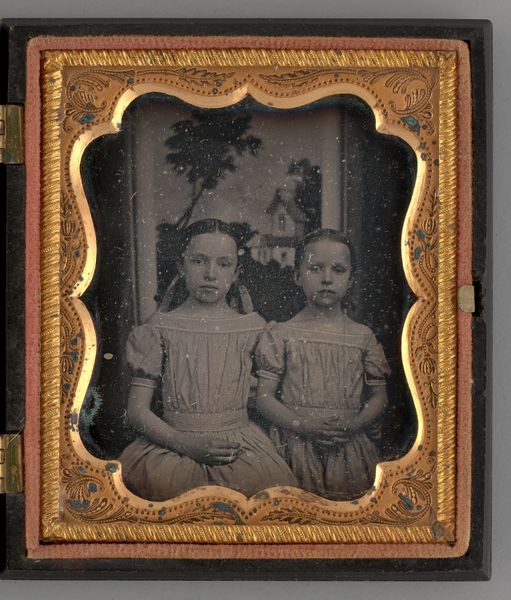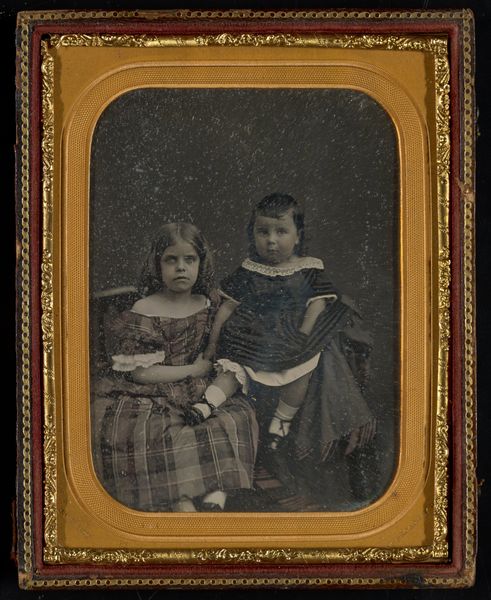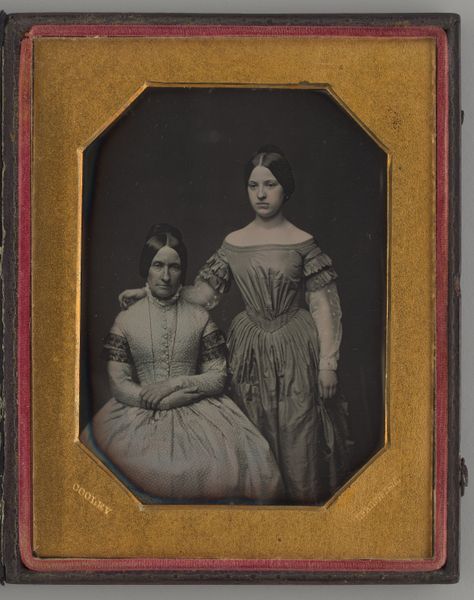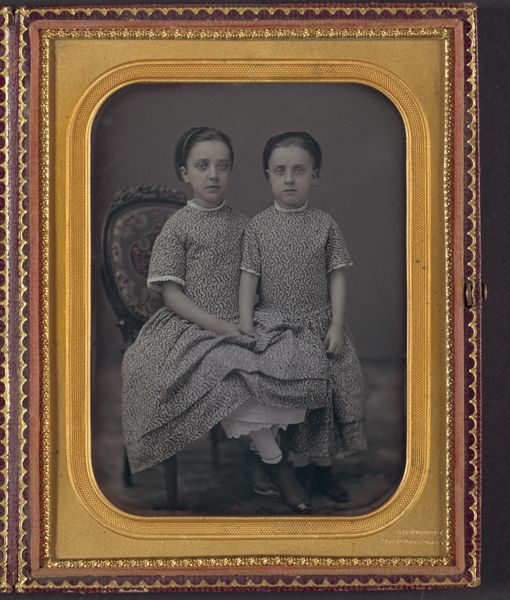
daguerreotype, photography
#
portrait
#
daguerreotype
#
photography
#
academic-art
Dimensions: 8.2 × 7 cm (3 1/4 × 2 3/4 in., plate); 9.2 × 16 × 1.1 cm (open case); 9.2 × 8 × 1.6 cm (case)
Copyright: Public Domain
Curator: This daguerreotype from 1855, presently known as "Untitled (Portrait of a Woman and a Boy)," captures a quiet moment between mother and child. Editor: My first impression is the intensity in their gazes, especially the boy. It's arresting and a little unsettling; those floral decorations feel almost like forced festivity, adding to that strange air. Curator: It’s fascinating how this type of portraiture became a widespread cultural phenomenon during the mid-19th century, offering middle-class families access to image-making in ways previously exclusive to the elite who commissioned painted portraits. Editor: And it makes me consider the symbolism loaded into such a static and deliberate image. What did it mean to freeze a moment in this way, especially for a mother and son? The flowers held by the boy—symbols of life, growth, maybe remembrance depending on their type. Does it commemorate an occasion, or perhaps signal mourning, or perhaps a hopeful image meant to contrast a past illness. Curator: Exactly. The cultural expectations and the rituals surrounding mourning practices during this time were significant. There's a stillness and solemnity here that reflects that era, regardless of its initial intent. One must not underestimate the context of social and public bereavement back then. It changed quite a bit the purpose of commissioning family portraits. Editor: Consider also that he’s draped in florals while her patterned shawl might invoke protection or even domestic confinement. She is central in the shot, seated, seemingly unsmiling while her look conveys power. What a fascinating visual relationship here between her, her son, and the many associated layers! Curator: It's important to acknowledge how this new form of representation influenced notions of beauty and status. This portrait provides a rare glimpse into how people sought to represent themselves in the face of evolving social landscapes. They want to be memorialized following the codes of the time. Editor: Looking at it, I’m now left pondering how a single image can encapsulate an entire world of hidden signs and messages and invite us into speculation about their life, or simply the intention that generated it. It leaves an haunting effect, nonetheless. Curator: I'm left to ponder how daguerreotypes became these powerful vehicles for expressing aspiration and documenting the individual experience within shifting cultural norms, now forever frozen in time, thanks to this medium.
Comments
No comments
Be the first to comment and join the conversation on the ultimate creative platform.
